Award-Winning Board Games
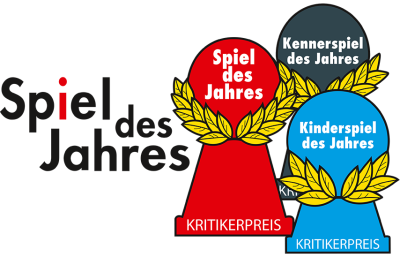
Were you aware that one of the many things the country of Germany is known for is board games? One of the reasons for this is that the most prestigious award in board games, the Academy Award of board game design, is awarded every year in Nürnberg. Called the Spiel des Jahres, which is just German for “Game of the Year,” this award shows that a game is easy to understand and get into, as well as fun to play! The Spiel des Jahres also has two sister awards: the Kinderspiel des Jahres, or “Children’s Game of the Year”, and the Kennerspiel des Jahres, the “Connoisseur's Game of the Year” given to excellent games with a high level of complexity. These awards are the highest level of prestige a board game can achieve. You might have even seen the award’s symbol along with its German name on games found in stores here in the US due to the respect it commands even in America.
As winter marches on and cold, wet weather assaults us regularly, it’s always a great time to get the family together for a board game. Did you know we have a wide selection of board games you can borrow here at the library? Among them are a large number of Spiel des Jahres winners, which are great places to start if you don’t play board games often. Let’s take a look at these winning games, and if you see one that sounds fun, give it a try! Who knows, you might find yourself with a brand new hobby, or at least a new activity at family gatherings.
Settlers of Catan (Spiel des Jahres Winner, 1995)
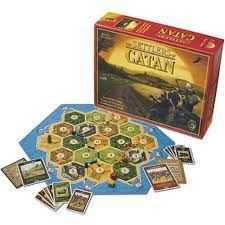
The oldest winner in our collection is considered a classic for a reason. It’s a game that has caused so many families to realize there are all kinds of deep and interesting board games out there besides Monopoly and Scrabble, and it is still a ton of fun 30 years or so later.
Catan is an island that you and your fellow players are attempting to build up into a thriving country. You’ll build towns, cities, and networks of roads to reach across the board and try to become the most prosperous. However, to do this, you’ll need resources, and you only receive resources based on where you’ve built and the luck of die rolls. You’ll have to negotiate with other players to get what they have too much of, all while making sure you aren’t giving them the last brick they need to build a better society than yours!
The best part of Catan is that the board is made of tiles that are shuffled around every game, making it so that no two games of Catan are the same. You may have a surplus of wood in your first game due to how the board was set up, but next time wood might be quite scarce, forcing you to find new strategies. It’s this ability to feel new each time you sit down that has given this game such longevity.
Chicken Cha Cha Cha (Kinderspiel des Jahres Winner, 1998)
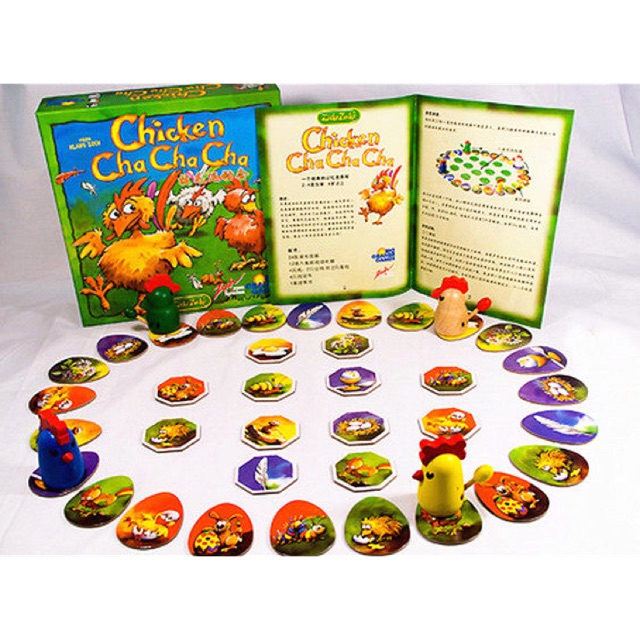
If you have young kids in your family, Chicken Cha Cha Cha might be the game for you. A winner of the award specifically for young children, the game is a lot like the classic matching game Concentration, but with a twist that makes it more fun for kids and adults to play together.
Everyone takes a cute chicken piece with a tail feather, and a pile of face down tiles with pictures are put in the center of the table. The chickens are then put on a circle of egg-shaped space pieces an equal distance apart. Each player takes a turn picking up a piece from the center, and seeing if the next egg in the circle track matches that picture. If it does, their chicken moves forward! If it doesn’t, nothing happens. They then put the piece back face down and the game moves to the next player. This makes the game completely random at first, but slowly the memory element starts to come into play, as knowing which pieces have which pictures can help you move much faster.
To win, you have to collect everyone else’s tail feathers. You can steal someone’s feathers by passing them on the circle. But watch out, because if you get overtaken, that player gets to take all your feathers, not just one! Older players can strategize about when to make a match so as not to be overtaken when they have lots of feathers, while younger players can just enjoy matching the pictures and moving their chicken around.
Carcassonne (Spiel des Jahres Winner, 2001)
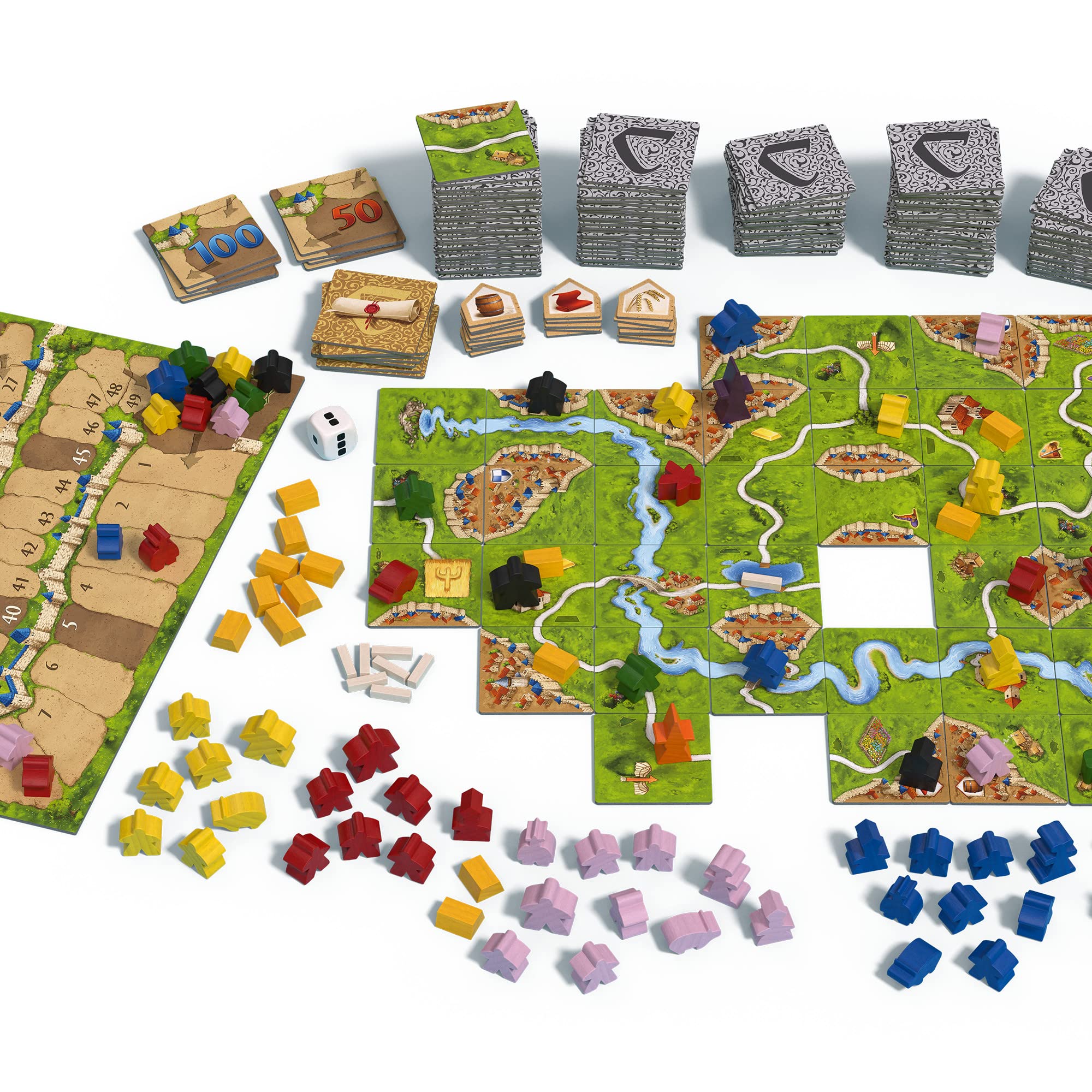
Named after a city in France with walls built all around it, Carcassonne is a game about thinking a few steps ahead of your opponents. Together with other players, you’ll build a map of the French countryside with roads, fields, churches, and towns. You do this by pulling random tiles out of a bag, and putting them where they make sense on the table. This can be nice and relaxing all by itself, but the strategy comes in when trying to score points. Each player has a limited number of person-shaped pieces, called Meeples, which they can put on the tiles they lay down. When a feature is complete, such as a road where all the ends connect to something, that feature is scored, and if you have a Meeple on it, you get to pick it back up to use again, and score those points. If you didn’t have a Meeple on it, you don’t get the points.
Each feature has its own way of scoring points, and because any player can finish any feature, it becomes a lot of fun at the table to finish an opponent’s city he started before it gets big, making it so he only gets a few points, or to skillfully place a road with your Meeple in such a way that your opponent must also use your road, giving you points if she finishes it as well. Once you get the rules down, it’s a very fast and relaxing game that friends of mine have played with their families during gatherings for years and years.
Qwirkle (Spiel des Jahres Winner, 2011)
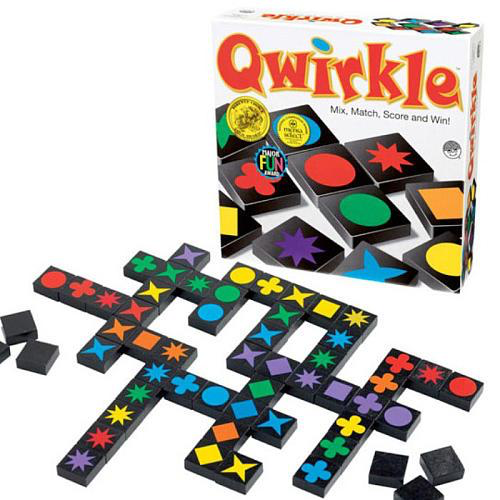
A strange combination of Scrabble and Rummy, Qwirkle is something called an abstract game, or game without a theme. Instead of picturing France or dancing chickens, you are simply matching shapes on a board. Abstract games are some of the favorite games of people who like to really show off their genius plays by really considering all options, and Qwirkle is a great, family-friendly and easy to understand introduction to that genre.
Everyone gets a random hand of tiles that have shapes in various colors. Each player takes turns either adding tiles to a Scrabble-like board, or exchanging tiles for new ones that might work better next turn. To play a tile, it must match the pattern in that row. For example, a player could play a row of a Green Diamond, a Purple Diamond, and a Red Diamond, because they’re all Diamonds. The next player could then add to it with a Yellow Diamond, or they could put a Red Star and a Red Circle to create a new line of Red tiles coming out of that Red Diamond. Points are scored for every tile in a line, including ones that were there before that player started playing. So if you can continue a big pattern, you earn big points! It is one of those “easy to learn, hard to master” game experiences that might have you organizing shapes and colors in your sleep.
Codenames (Spiel des Jahres Winner, 2016)
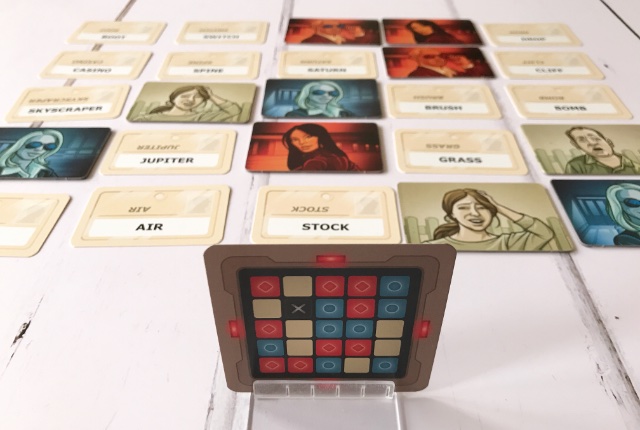
If you’ve ever dreamed of being a spy on a secret mission, or just really like word games, you’ll love Codenames. It’s a game of giving clues to your friends that are just enough information to make the right choices, but not too specific so as to make you too slow. It’s a great game for parties and big gatherings.
Players split into two teams, and one person on each team becomes the Codemaster for their team. Words are dealt into a grid, and the codemasters get to see which words are codenames for friendly informants, enemy informants, clueless civilians, and most importantly, the deadly assassin. The codemasters then take turns giving clues to their team to help them find their team’s informants. Clues consist of a word not on the board, and a number, with the number indicating how many informants that clue references. The rest of the team can then pick any number of potential informants, but if they mess up, they may give points to the opposing team by revealing their informants, or worse, end the game immediately if they reveal the assassin! It’s a game of hilarious mixups where the codemaster gets to sweat because they said “red 3” to indicate “Ketchup,” “Tomato,” and “Heart,” but forgot that the assassin was under the “Newspaper” card, and has to hope their team doesn’t think they meant “read”! It’s also a game that’s simple to make easier or harder by just adding or subtracting people as extra codemasters to discuss what clues to give or extra guessers to get a few more brains in there.
Wingspan (Kennerspiel des Jahres Winner, 2019)
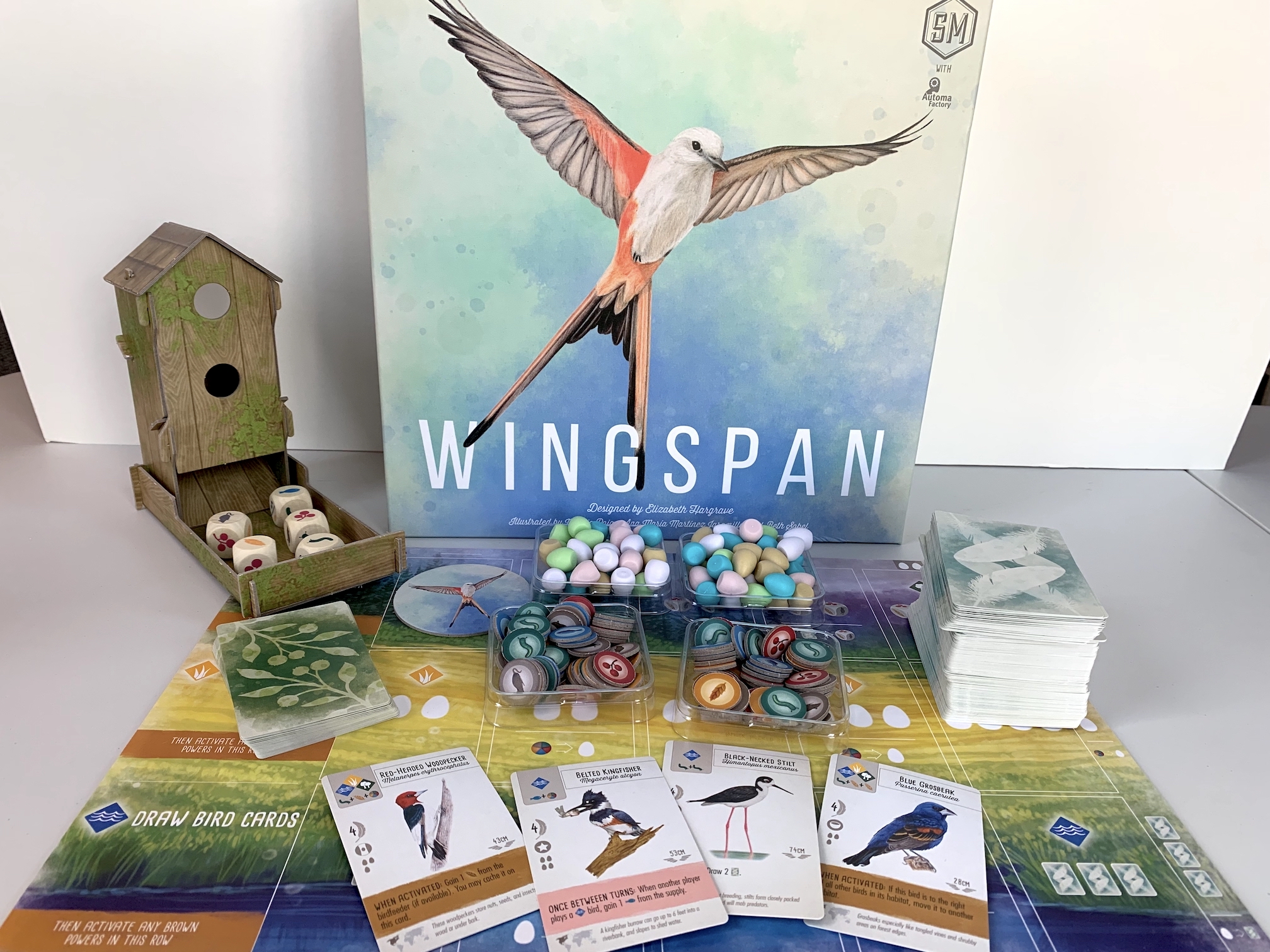
The most recent winner in our collection is the most complicated game on this list, but its gorgeous artwork and accessible strategy have made it a huge hit the past few years. In Wingspan, everyone is trying to build their own bird sanctuary. Everyone chooses secret objectives for their specific sanctuary. Maybe you will get points if you gather birds that eat insects, and maybe your opponent will get points for getting birds with a big wingspan. Hey, that’s the name of the game!
As a complex game, the specifics of play are a little hard to summarize, but you’ll feed your birds, get them to lay eggs, and play them to different habitats in order to use each bird’s special ability to score even more points and get even more birds that meet your secret missions. All the while you can enjoy breathtaking art of real life birds covered with real facts about them, as well as interact with cute gameplay pieces like a little bird feeder where you’ll get your birds food. If you’re willing to sit down and really dig into the rules, Wingspan will be a great time for you and your family.
Did any of these sound like a good time to you? While these are all award-winners, don’t let them restrict you in your game night choices! We have many different board games for a variety of skill levels, ages, and interests. You might not normally come to the library for a game, but give it a try next time! You might be surprised by how much you’ll be hooked.